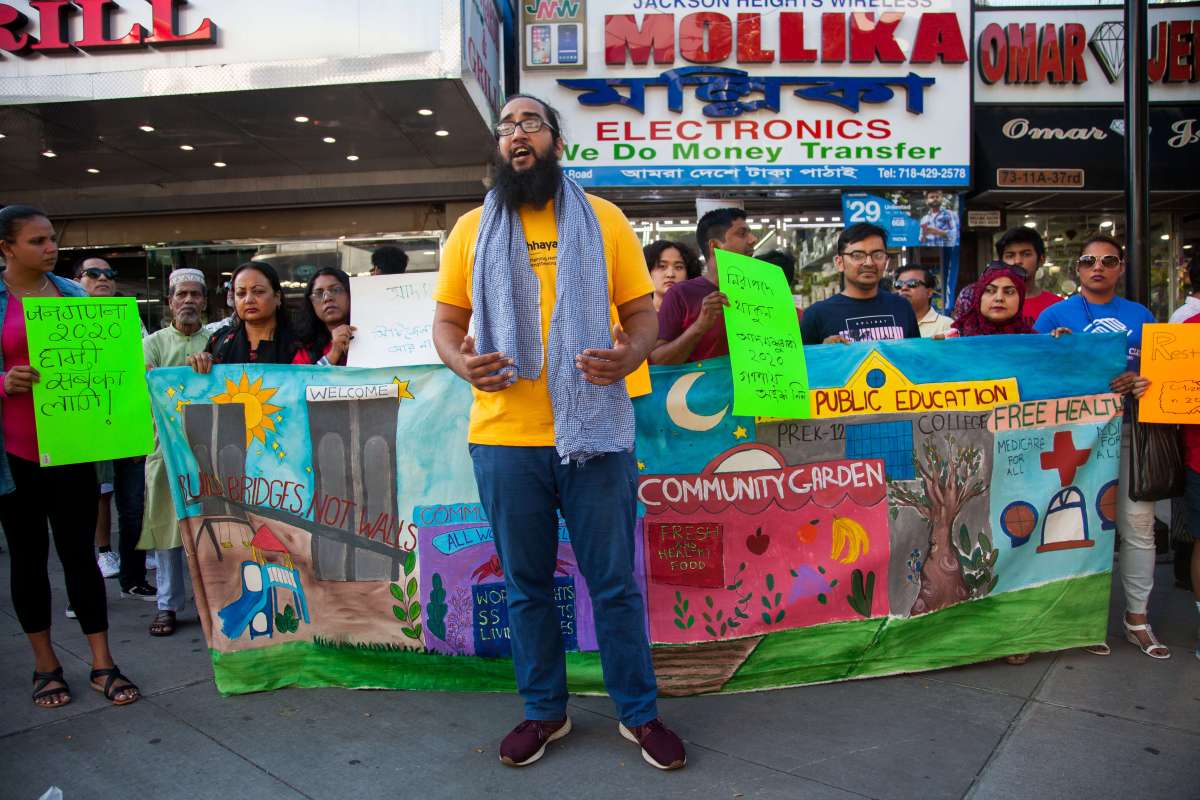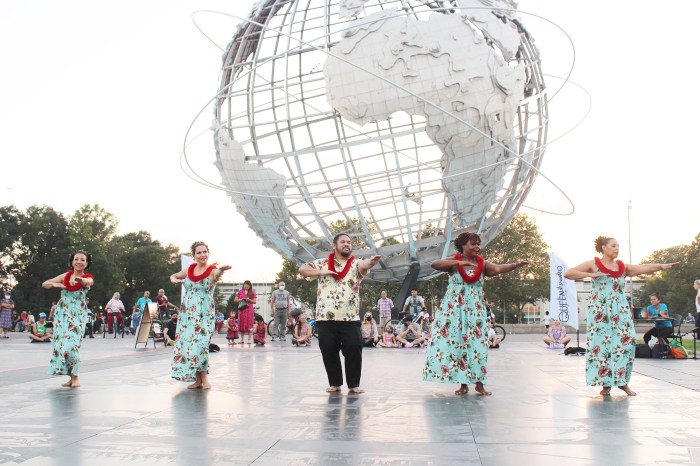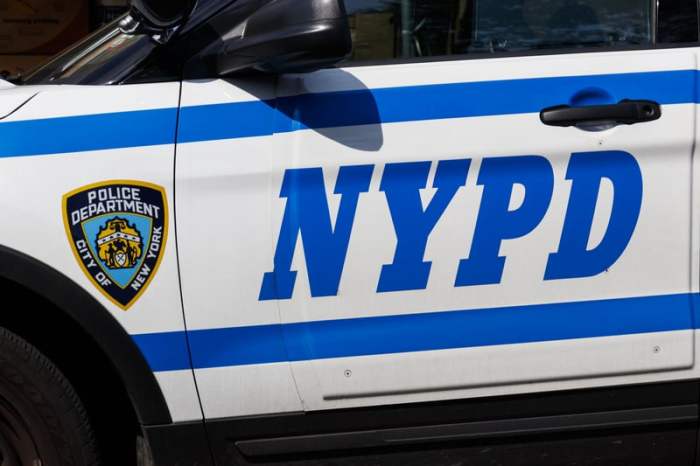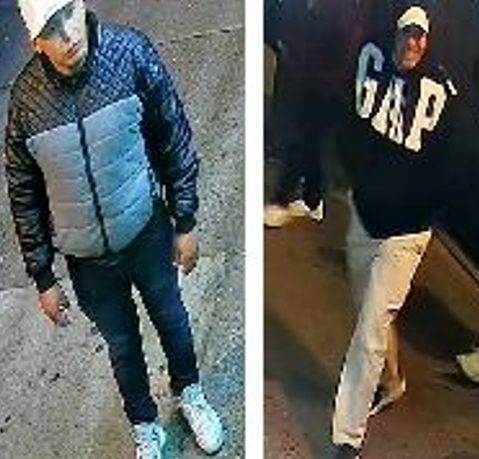The sound of the Dohl, a double-headed Bangladeshi drum, rang out through Jackson Heights’ Diversity Plaza on June 27 in celebration of the Supreme Court’s ruling earlier that day against the Trump Administration’s attempt to put a citizenship question on the 2020 Census.
Desis Rising Up and Moving (DRUM) organized the event with other South Asian and Indo-Caribbean community groups like Adhikaar and Chhaya CDC to broadcast the news and invite Jackson Heights to get involved in their efforts to ensure their immigrant communities are counted properly.
“As a result of today’s decision, our communities are now protected. We know that the data collected in the census will not endanger [us],” said Fahd Ahmed, executive director of DRUM. “It is important for us to get counted so that we can get the funding that our communities need for hospitals, for education, for transportation, for all of our basic needs and to make sure we have representation in Congress.”
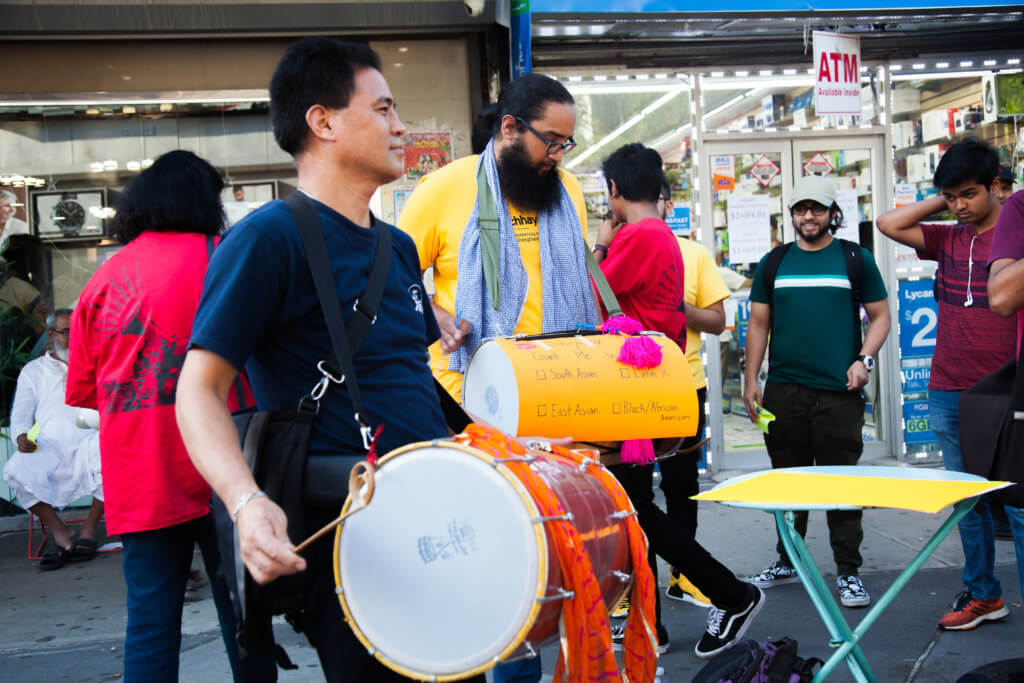
DRUM and other South Asian groups have been organizing against the citizenship question for nearly a year out of fear that the ruling would scare members of the South Asian community in Queens from participating. To mobilize against the impending decision over the past year, but also to prepare for the worst, they organized mass public education events around the city and gathered comments for the public commentary period.
“Even though we’re celebrating today’s victory we have to vigilant. A couple of hours ago, the president put out a comment saying maybe we’ll just reschedule the census by a year,” said Ahmed. “We’re going to be doing this community education no matter what, but obviously we’re going to be advocating that there be resources on a city and state level.”
Prarthana Gurung an organizer with Adhikaar, one of the only organizations focused specifically on the Nepali community in the country, said that educational advocacy is vital in this process. She pointed out that there is a large gap between what is happening of a Federal level and what members of the South Asian community hear.
“I was just talking to a member and she asked, ‘What is this?’ Even before I could explain the citizenship question, I had to explain what a census was,” said Gurung.
Gurung said that for Adhikaar the stakes in 2020 are especially high. A recent report shows that the Nepali community in the U.S. increased by 206.6% between 2010 and 2017.
“The current census number for our community is crazy low. So we know that there’s a direct correlation between getting counted and getting the funding and access that you need,” she said.
In New York City, the Mayor’s Office takes on a key role in apportioning state census funding either within itself or to outside nonprofit groups who work rolling out the collection process.
In 2010 Chhaya CDC launched a census task force, which reached out to 100,000 South Asian and Indo-Carribbean residents in order to get them to fill it out.
Jagpreet Singh, the lead organizer for Chhaya, said that while the count for Jackson Heights was successful that year getting a 90% participation rate, the effort in Richmond Hill, which has the second largest South Asian community in Queens, was not as successful, with a rate of only about 50%.
“The process for community organizations to figure out who are the people who are going to roll this out for us [takes time]. For those people to develop a strategy of like well what are the areas that we want to hit. If we don’t have enough time, then you try shotgun it last minute and it doesn’t get to the people that we really need to reach,” said Ahmed.

